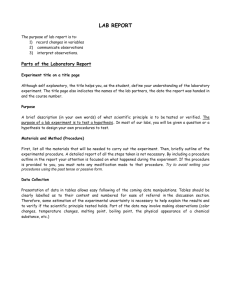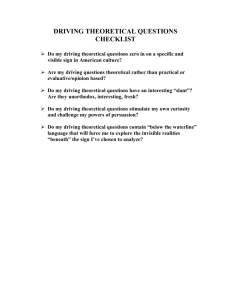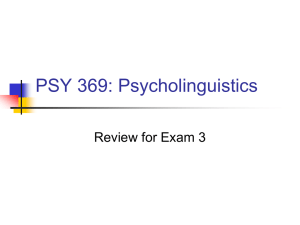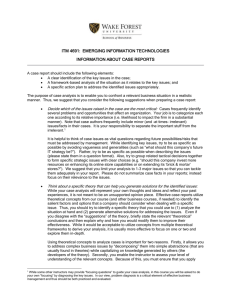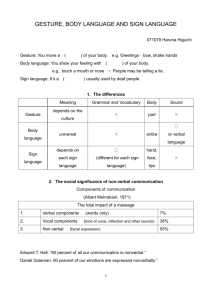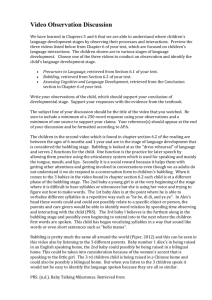Chapter 2 key concepts
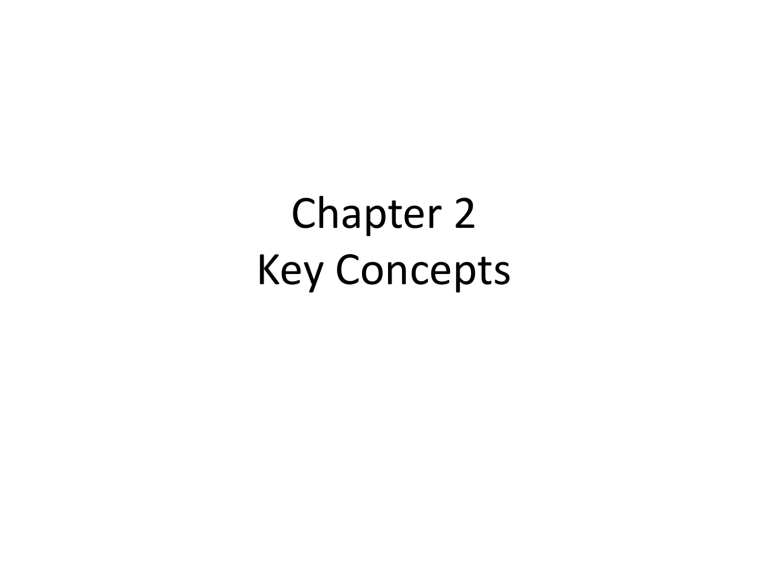
Chapter 2
Key Concepts
behaviorism
behaviorism
Theoretical view proposing that learning principles can explain most behavior, and that observable events, rather than mental activity, are the proper objects of study.
child-directed speech (CDS)
child-directed speech (CDS)
Special speech register used by adults and older children when speaking to younger children and infants. Characteristics include exaggerated intonation and considerable repetition.
CHILDES (Child Language Data
Exchange System)
CHILDES (child language data exchange system)
Online corpus that has grown to include numerous transcripts of dialogues between children and adults and older children.
connectionism
connectionism
Theoretical view proposing that language is learned through exposure to input allowing the construction of associations among units, i.e., sound sequences, words, sentence patterns, etc.
emergentism
emergentism
Theoretical view that phenomena of language are best explained by reference to more basic non-linguistic factors and their interaction (e.g., physiology, perception, processing, input properties, etc.)
empiricism
empiricism
Theoretical view that emphasizes the role of the environment and experience over that of innate ideas or capacities.
formulaic sequences (or expressions)
formulaic sequences (or expressions)
Phrases that learners learn and use as a whole unit, without analyzing into individual units (e.g., ‘How are you’ used as a single unit).
high amplitude sucking (HAS)
high amplitude sucking (HAS)
A technique used to study infant perceptual abilities; typically involves recording an infant's sucking rate as a measure of its attention to various stimuli.
input
input
The language to which an individual is exposed in the environment.
interactionism
interactionism
Theoretical viewpoint that recognizes the role of experience and the environment, as well as the contribution of innate capacities.
interference
interference
Influence of L1 in the L2 when it leads to an error, or vice versa.
metalinguistic awareness
metalinguistic awareness
Ability to reflect on language as an object.
mean length of utterance (MLU)
mean length of utterance (MLU)
Measurement used to calculate the development of children’s grammar, i.e., number of morphemes divided by total number of utterances.
morpheme
morpheme
Smallest meaning-bearing unit of language (e.g., word units, like “dog” and grammatical inflections like the plural “–s”).
nativism
nativism
A theoretical approach emphasizing the innate, possibly genetic, contributions to any behavior.
nonreduplicated (variegated) babbling
nonreduplicated (variegated) babbling
Babbling in which young children vary the consonant-vowel sequences used; for example, “ba-da-ga.”
object permanence
object permanence
The understanding that an infant gains during the latter part of the first year that objects continue to exist even though they may no longer be visible.
overextension
overextension
A child’s use of a word for objects or items that share a feature or property; for example, using “dog” to refer to all animals with four legs.
overgeneralization
overgeneralization
The child’s use of a rule or structure in contexts in which it is not appropriate; for example, “I hurted my arm.”
reduplicated babbling
reduplicated babbling
Babbling in which consonant-vowel combinations are repeated, such as
“ba-ba-ba.”
transfer
transfer
Influence of the L1 in using the L2, or vice versa.
underextension
underextension
A child’s use of a word with a narrower meaning than in the adult’s language; for example, “dog” to refer only to the family’s pet.
Universal Grammar (UG)
Universal Grammar (UG)
The innate principles and properties that characterize the grammars of all human languages; also used to describe the theoretical view associated with this concept.

